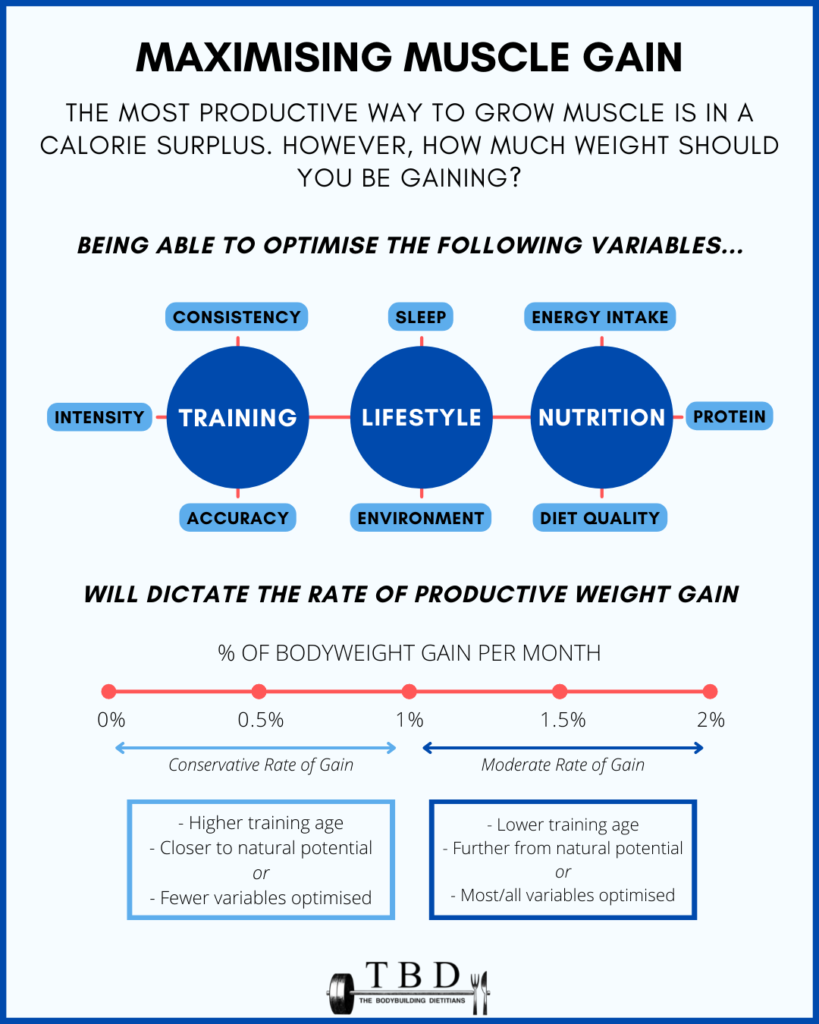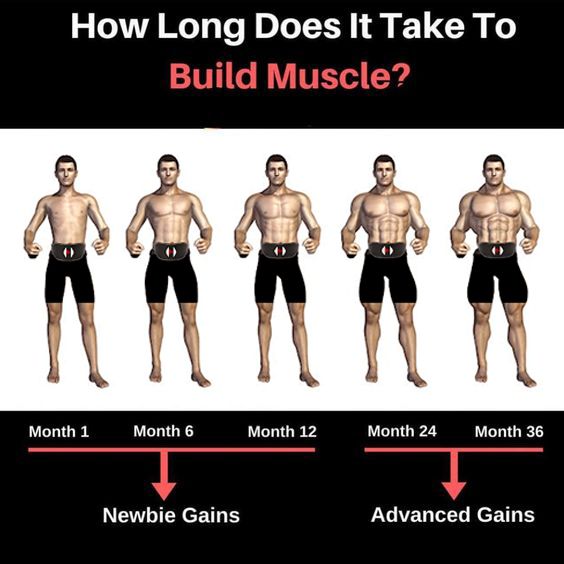Muscle growth typically begins to show after 4-6 weeks of consistent training. Visible changes depend on various factors like diet and workout intensity.
Building muscle takes time, dedication, and a strategic approach. Consistent strength training, proper nutrition, and adequate rest are crucial for noticeable muscle growth. Beginners may see initial changes in muscle tone within the first month. The rate of muscle development varies based on genetics, workout routine, and dietary habits.
Including compound exercises, like squats and deadlifts, can accelerate muscle gains. Eating a balanced diet rich in protein supports muscle repair and growth. Staying hydrated and getting enough sleep also play essential roles. Monitoring progress and adjusting your regimen can lead to more significant improvements over time.
Credit: www.quora.com
Muscle Growth Basics
Muscle growth depends on many factors. Diet is very important. Eating protein-rich foods helps muscles grow. Exercise also plays a key role. Strength training builds muscles faster. Rest is needed for muscle recovery. Sleep helps muscles repair and grow. Genetics can affect muscle growth rate. Some people build muscles faster than others. Age also matters. Young people can grow muscles quicker. Hormones like testosterone help too. Consistency is key to muscle growth.
There are two types of muscle fibers. Slow-twitch fibers are good for endurance. They help in activities like running. Fast-twitch fibers are for power. They are good for lifting weights. Each person has a mix of both. The ratio can affect muscle growth. Training can change the size of these fibers. Endurance training makes slow-twitch fibers grow. Strength training makes fast-twitch fibers grow.
Nutrition’s Role
Proteins help build and repair muscles. Eating enough protein is very important. Try to get protein from lean meats, beans, and nuts. Protein shakes can also help. Aim for 1.2 to 2.2 grams of protein per kilogram of body weight. Spread your protein intake throughout the day. Eat protein with every meal for the best results.
Carbohydrates provide energy for workouts. Good sources are whole grains, fruits, and vegetables. Fats are also important. They help with hormone production and cell health. Get fats from avocados, nuts, and olive oil. Balance your diet to include all three macronutrients: proteins, carbs, and fats. This balance helps you grow muscle faster.
Effective Training Methods
Strength training helps build muscle mass. It involves lifting weights and using resistance bands. You should train different muscle groups. Rest between workouts is crucial. Muscles need time to recover and grow. Consistency is key to seeing results. Aim for at least three sessions per week.
High-Intensity Interval Training (HIIT) combines short bursts of intense exercise with rest periods. It boosts metabolism and burns fat. HIIT can be done with any exercise, like running or cycling. Each session should last around 20-30 minutes. HIIT improves cardiovascular health and muscle tone.
Recovery And Rest
Good sleep helps your muscles grow. During sleep, your body repairs itself. This process makes muscles stronger. Aim for at least 8 hours of sleep each night. Poor sleep can slow muscle growth. A consistent sleep schedule is also important.
Light exercise helps muscles recover. Walking and stretching are good options. Active recovery reduces muscle soreness. It also improves blood flow to muscles. This helps them heal faster. Gentle yoga and swimming are also great choices.
Supplementation
Protein powder helps build muscle. Creatine boosts strength and endurance. BCAAs aid in recovery. Multivitamins fill nutrient gaps. Fish oil supports joint health.
Read labels carefully before use. Follow the recommended dosage. Do not mix too many supplements. Drink plenty of water. Watch for any side effects. Consult a doctor if unsure.

Credit: builtwithscience.com
Tracking Progress
Seeing muscle growth typically takes about 6-8 weeks of consistent training and proper nutrition. Visible changes depend on workout intensity and individual genetics.
Measuring Muscle Mass
Measuring muscle mass can be fun. You can use different tools. Body fat calipers help you measure fat. Tape measures help you track size. Bioelectrical impedance scales give a quick read. These tools show changes over time. Try to measure in the morning. This is when your body is most stable. Keep a log to track your progress. This helps you see changes. Remember to measure the same spots every time. This keeps your data accurate.
Photographic Evidence
Photos show your muscle growth. Take pictures each week. Use the same pose. Wear the same clothes. This helps you see changes. Good lighting is important. It shows muscle definition. Save the photos in a folder. Look back after a few months. You will see clear progress. This motivates you to keep going. Photos are a great way to track your journey.
Overcoming Plateaus
Muscles get used to the same exercises. Changing routines can shock your muscles. This helps them grow faster. Try new exercises every few weeks. Increase the weight or the number of reps. You can also change the order of your exercises. Small changes can make a big difference.
Mental strength is key to overcoming plateaus. Stay positive and set small goals. Celebrate small victories. This keeps you motivated. Visualize your progress. Picture your muscles growing. Believe in your ability to grow stronger. Stay focused and never give up.
Genetics And Muscle Growth
Genes play a big role in muscle growth. Some people build muscle faster. Others take more time. Muscle fibers come in different types. Fast-twitch fibers grow bigger and stronger. Slow-twitch fibers are good for endurance. People have different amounts of each fiber type. Hormone levels also matter. Testosterone helps muscle growth. Some people have more testosterone. This makes muscle growth easier for them.
Muscle growth takes time. Do not expect big changes fast. Consistency is key. Keep working out and eating right. Small gains add up over time. It may take weeks to see changes. Patience is important. Track progress with photos or measurements. Celebrate small wins. Stay motivated by setting realistic goals. Remember, everyone grows at their own pace.

Credit: www.healthline.com
Frequently Asked Questions
How Long Before Seeing Muscle Growth?
Typically, muscle growth becomes noticeable after 4-8 weeks of consistent training. Factors include workout intensity, diet, and individual genetics.
What Affects Muscle Growth Timeline?
Muscle growth timeline is influenced by factors such as diet, workout intensity, rest, and genetics. Consistency is key.
Can Beginners See Muscle Growth Faster?
Yes, beginners often see muscle growth faster due to new stimuli. Initial gains are usually more noticeable.
Does Diet Impact Muscle Growth Speed?
Absolutely, diet plays a crucial role. Protein intake, calories, and nutrients directly affect muscle growth speed.
Conclusion
Seeing muscle growth takes time and dedication. Consistency in your workouts and a balanced diet are essential. Track your progress and adjust as needed. Patience and persistence will pay off. Stay motivated and celebrate small victories. Remember, everyone’s journey is unique.
Keep pushing towards your muscle growth goals.











